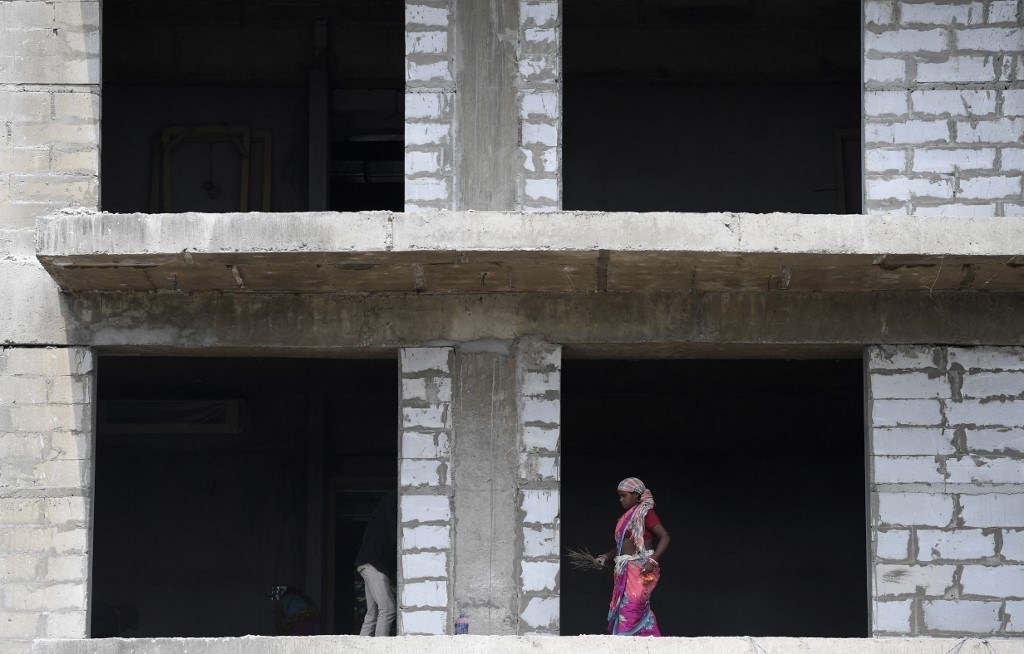[ad_1]
India’s real estate sector, one of the worst-hit during the nationwide lockdown last year, is now on the mend, says a survey by property consultant Knight Frank. This is the 27th edition of a quarterly survey of key supply-side stakeholders covering developers, banks, financial institutions and private equity players operating in the sector.
The Real Estate Sentiment Index for the October-December 2020 period indicates that residential property sales across eight major Indian cities have reached pre-Covid levels –61,593 units – and that the sentiment is likely to improve further. The residential segment outlook, according to the survey findings, was supported by pent-up demand, low home loan interest rates, attractive residential prices and incentives by state governments such as a cut in stamp duty in Maharashtra.
Nearly 77% of the respondents in the December 2020 quarter believed residential sales would rise over the next six months, up from 66% in the September 2020 quarter and 31% in the June 2020 quarter. However, 38% of respondents believed that prices of residential units would rise, down marginally from 40% in the September 2020 quarter.
As per the report, the “Current Sentiment Score†grew 14% over the previous quarter and for the first time in 2020 entered the optimistic zone at 54 points. A score of above 50 indicates “optimism,†a score of 50 means the sentiment is the “same†or “neutral,†while a score below 50 indicates “pessimism.†The “Future Sentiment Score†also grew sharply to 65 points, from 52 points in the preceding quarter.
As for the office market, 60% of respondents believed that office leasing activity would increase over the next six months. In the preceding quarter, it was 47%.
The survey, which covered Kolkata, Chennai, Pune, Delhi, Mumbai, Bangalore, Hyderabad and Ahmedabad, was conducted in association with two trade bodies – the Federation of Indian Chambers of Commerce & Industry and the National Real Estate Development Council.
“Both the Current and Future Sentiment scores in Q4’CY20 have seen surge backed by revival in both residential and office market. As we begin our journey into 2021 with a positive outlook, it is important to closely watch the performance of key economic indicators in the coming months to check the sustainability of the growth. Equally crucial is the development of the vaccine and its widespread availability for the masses. These two factors will largely determine the performance of the real estate sector in the coming months,†said Shishir Baijal, chairman and managing director at Knight Frank India.
“The real estate sector has seen a boost in sentiments, aided by supportive measures from the government, the RBI and the resultant pick-up in end-user demand. Any further demand boosting measures announced by the government in the upcoming Union Budget, will give a strong fillip to real estate sector,†said Rajani Sinha, Knight Frank’s chief economist. India’s economic indicators have begun improving in the last few months with the economy moving towards normalcy, but the critical aspect would be at what level the growth momentum is sustained after taking care of the pent-up demand, she added.
Home size
A recent report by Anarock Property Consultants has said that the work-from-home and learn-from-home culture brought about by the Covid-19 pandemic have led to a rise in demand for larger housing spaces. Anarock said that for the first time in four years the average apartment sizes in the top seven cities have shown an increase. It has risen by 10% to 1,150 square feet in 2020, up from 1,050 square feet in 2019.
Some home buyers were even willing to shift to cheaper suburbs and smaller cities to get larger homes, the report said. Property developers are also trying to cash in on this sentiment by introducing business centers to ensure that those working from home have an office-like environment within their housing complex.
Anarock Chairman Anuj Puri said, “The year 2020 saw an almost immediate reversal of buyer preferences. With the accent suddenly being on accommodating the WFH and learn-from-home culture, flat sizes began increasing for the first time in four years.â€
[ad_2]
Source link













